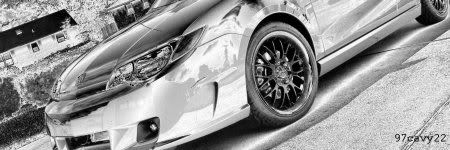2006 CADILLAC XLR V-SERIES







BASE PRICE: $85,000 (est.)
POWERTRAIN: 4.4-liter, 440-hp, 425-lb-ft supercharged V8; rwd, six-speed automatic
CURB WEIGHT: 3804 lbs
0 to 60 MPH: 4.9 seconds (mfr.)
ON SALE: Early 2006
We probably wouldn’t blame General Motors if it axed the Cadillac XLR, given sales of the $76,000 luxury roadster since its introduction 18 months ago haven’t come close to expectations. That would be the usual GM thing to do—take a look at the short-term bottom line and overreact accordingly.
But in yet another refreshing sign from GM and its reborn Cadillac division, rather than dropping XLR, the formerly stodgy codgers at Cadillac are upping the ante by producing the V-Series performance version.
Making good on rumors we first heard back when XLR was introduced in summer 2003, XLR V-Series was unveiled at the New York auto show, complete with the supercharged Northstar powerplant we were promised oh so long ago.
As the third V-Series in the Cadillac line, XLR is the beneficiary of a considerably longer gestation period between introduction of the standard car and the presentation of the performance model, compared to V versions of CTS and STS. Besides allowing for more time to engineer the car, XLR-V also gets a lot more attention to handcrafted touches, such as leather on the upper steering wheel and the rollover hoops and above the instrument panel.
“We were able to do a lot more,” says Dave Hill, chief engineer and vehicle line executive for GM Performance Cars. “It’s a total car—we’d put it up against anything for sophisticated performance at a really high level.”
At the heart of the XLR-V is the same 4.4-liter, 440-hp, 425-lb-ft supercharged V8 that first appeared in the STS V-Series last fall. The engine is boosted by a helical Roots-type rotor set with four tubular intercoolers built into GM’s patented integral supercharger-intake manifold. Toss in variable intake and exhaust timing, which produces refined power along with strong top-end performance, and Cadillac says its boosted roadster will easily meet the V-Series goal of a sub-5.0-second 0-to-60-mph time.
Power routes to the rear wheels through a new rear-mounted, six-speed automatic transmission that incorporates some of GM’s best features, such as Performance Algorithm Shifting, which prevents upshifts in high-lateral acceleration maneuvers even if the driver lifts off the accelerator, and Performance Algorithm Liftfoot, which minimizes upshifts during closed-throttle driving and cornering to prevent unnecessary shifting.
XLR-V also gets a host of chassis modifications, including an upgrade to the 13.4-inch front/13-inch rear brakes used on the Z51 Corvette, larger front and rear antiroll bars, stiffer rear lower control-arm bushings, larger 19-inch Pirelli run-flat tires, and a recalibrated Magnetic Ride Control. As the only V-Series model with MR, Hill says XLR gets the best of both worlds—a comfortable around-town ride quality combined with a seamless transition to stiffer suspension control under aggressive driving conditions.
Styling modifications to the Tom Peters-designed XLR were directed by GM Performance design chief Kip Wasenko, who is steeped in XLR styling from his experience bringing the conceptual XLR, the Evoq, to life. Wasenko’s changes reinforce the V’s performance abilities, while retaining its elegance and refinement. Many mods were necessitated by performance upgrades, such as the bulging power dome in the hood to provide space for the supercharger beneath, and added intakes and louvers to direct more cooling air to the engine, power steering, supercharger, oil and transmission coolers, and the brakes.
Though Hill has long been associated with Corvette engineering, he assures XLR-V is no Z06 clone. XLR-V is a luxury sports car, with more mass and sound-deadening materials, which boosts its weight by several hundred pounds over the Z06, Hill notes. But the differences go beyond that in terms of distinctly unique driving qualities, he says.
“We’ve got enough tools in our kit to make completely different cars,” says Hill. “It’s like the difference between a Porsche Turbo and a Mercedes SL roadster.”
XLR-V goes on sale in the first quarter of 2006. Pricing hasn’t been announced, but Hill promises an “attractive” price for the segment. I suppose that’s another way of saying it ain’t going to be cheap.
>>>For Sale? Clicky!<<<
-----The orginal Mr.Goodwrench on the JBO since 11/99-----




















